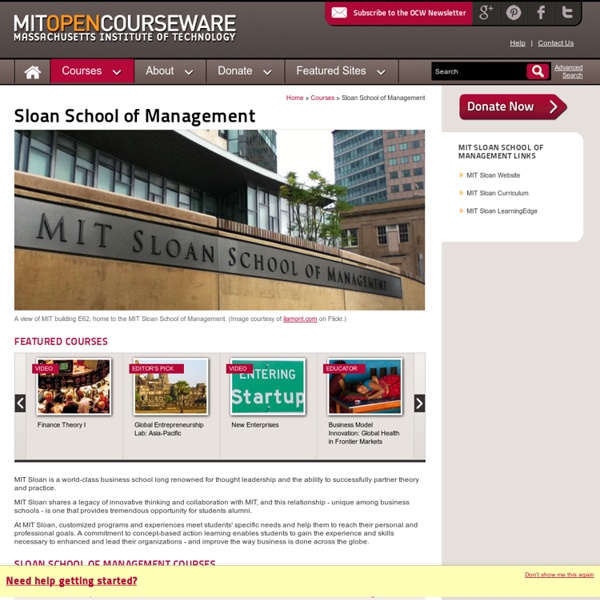



Internet Archive: Details: Evolved Virtual Khan Academy Tutorials Ponzimonium After Bernard Madoff's $65 billion Ponzi scheme was revealed, many new (smaller-scale) Ponzi schemers became exposed. Ponzimonium ... Quarterly Earnings Report A quarterly filing made by public companies to report their performance. Included in earnings reports are items such as net ... Exokernel Operating System MIT Exokernel Operating System Putting the Application in Control. An operating system is interposed between applications and the physical hardware. Structure of an exokernel system. in turn use the exokernel to allocate and deallcate hardware resources. We have built several exokernel based systems. Check out a slide-show about exokernels on our documentation page. An alpha-release of our exopc distribution is currently available. For more information on exokernels and related projects see the home pages of the Parallel and Distributed Operating Systems group at the MITLab for Computer Science.
HowStuffWorks "Science" GAlib: Matthews Genetic Algorithms Library Innovation Diffusion This is my last column for Technology Review. Really. It’s all over. Why? New editorial directions, new opportunities. Perhaps it’s time for a different take on the evolving politics, culture, and economics of innovation. But I’d be foolish to pass up this final chance to discuss what I’ve learned – and unlearned – about innovation since this column first appeared in Technology Review’s January/February 2002 issue. Simply put: innovation isn’t what innovators do; it’s what customers, clients, and people adopt. That’s also why I now believe that the dominant global issue of our time is the accelerating diffusion of innovation. Every significant issue of our time – energy crises, environmental degradation, economic development, public health, HIV/AIDS, educational opportunity, child care – is increasingly shaped by the ebb and flow of technical innovation. The Big Lie of the Information Age is that “Nothing is more powerful than an idea whose time has come.”
Technology Review: What's the Best Q&A Site? Everyone knows a lot about something, whether it’s quasars, quilting, or crayons. But the converse is also true: there are a lot of things that most people know nothing about. And unfortunately, that doesn’t seem to stop them from sharing their opinions. That’s one lesson I took away from my recent survey of the growing collection of social question-and-answer websites, where members can post questions, answer other members’ questions, and rate other members’ answers to their questions–all for free. The Wikipedia-like, quintessentially Web 2.0 premise of these ventures–which include Yahoo Answers, Microsoft’s Live QnA, AnswerBag, Yedda, Wondir, and Amazon’s new Askville–is that the average citizen is an untapped well of wisdom. But it takes a lot of sifting to get truly useful information from these sites. In an attempt to flush out the best of the bunch, I’ve spent the past few days trying to identify what unique advantages each one offers. The Results:1.
The Downside » Blog Archive » MIT Tech Review: Worst review of t When someone writes for a publication like MIT’s Technology Review, they have an obligation to write articles that are objective and scientifcally sound. To represent a brand like MIT, they have to observe the standards of review journalism such as creating measurable comparison criteria, applying those standards consistently, and giving consistent, even-handed treatment to their subjects. However, Wade Roush of Tech Review last month ignored all of these rules in his article What’s the Best Q&A Site? Perhaps it was Roush’s objective to take a light-hearted look at the Social Q&A space and therefore was lax in his editorial rigor, but if that’s the case, his review should have been published on a blog somewhere, not on Tech Review, and it should have had the appropriate disclaimers. When MIT Tech Review publishes an articles with hard numbers comparing websites, that review becomes gospel for the hordes of other sites that reference it, so it had better be accurate. Somewhat true. Wondir
Philip Greenspun’s Weblog » Improving Undergraduate Computer Sci These are the notes for a talk that I’m giving tomorrow at Makerere University in Kampala, Uganda. I’m posting them here because it is a convenient way to write and others might find these interesting. I’ll talk about MIT because that is where I have the most experience teaching. MIT operates the same way that it did upon opening in 1865: two semesters with long vacations in between; students do most of their learning in take-home problem sets (6-9 hours/week/course) for which they get some inspiration in lectures (2-3 hours/week); evaluation/grading is done by the same people who are teaching/coaching. The calendar was designed for rich families. You want your kid available in the winter so that you can take him down to your estate in Florida. How about lectures? Why did people come to lectures in 1865? What about homework? Evaluation and grading in 1865 was done by the teachers. How well does the MIT system work? 6.171: Software Engineering for Internet Applications. How does it work?